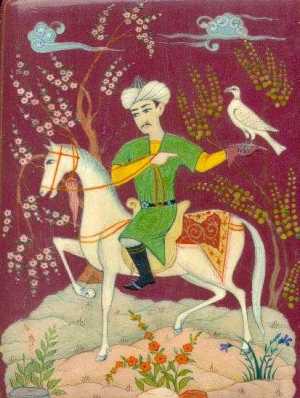
Here is the full text:
Rooted in Iran’s rich history, the delicate art of miniature has, throughout history, served as a means of narrating stories, introducing and transferring the country’s rich culture and rituals to people around the globe.
However, in different times in history, it lost its popularity. Following the Mongol invasion of Iran (1219 CE), the enchanting art was no longer commonly practiced among Iranians.
However; the art was transferred to China from Iran through the Mongol rulers and its popularity grew among the Chinese, who reflected nature in their artistic works.
Years after Mongol invasion, miniature and painting were revived in the country. Unlike Chinese artists, nature was never such a prevalent topic among Iranians. A majority of Iranian artists found miniature a suitable media for expressing their emotions and feelings.
Centuries after the revival of miniature in Iran, the art is currently on the verge of going into oblivion, as fewer young individuals show interest in the art.
Ali Fotowat, 32, is among few miniaturists, who have been involved in the art since the past 25 years.
Persian daily ‘Iran’ conducted an exclusive interview with Fotowat to learn more about the current condition of miniature.
Excerpts follow:
IRAN: When did you start learning miniature?
FOTOWAT: Miniature is regarded as a family art practiced by my ancestors over centuries. I began improving my painting skills under the tutelage of my father and grandfather, when I was seven. Learning how to create miniature has always been a great honor for me. I remember an Italian tourist who got so excited after seeing the artworks of my father and grandfather. His excitement indicated that I had made the correct decision by choosing miniature as a craft.
When did you create your first masterpiece? Which exhibitions have you taken part in so far?
After years of enduring hardships associated with learning, I managed to produce my first professional artwork at the age of 18. I participated in an international exhibition in Italy for the first time. I took a total of 40 artworks to the exhibition with the main goal of introducing Iran’s rich and authentic culture to the world.
We participate in almost all major international exhibitions in Europe and the US. The exhibitions that took place in Italy, Spain, France, Germany, Austria and the US drew millions of visitors, providing us with an opportunity to introduce a true image of Iran to the world.
Our pavilions are often among the most visited in these events such that I dare say foreigners are more interested in miniature than Iranians.
We try to introduce Iran’s civilization through our works in these exhibitions.
How many people are involved in the art? How can youth develop skills in the field?
Just like many Persian traditional arts such as ‘metal engraving’, miniature is on the verge of going into oblivion, as artists have to earn living through other occupations.
There are only 20 miniaturists in Isfahan.
Interested individuals can learn the art by attending courses in private institutes, and universities in Isfahan under the supervision of most distinguished masters.
Iran’s Cultural Heritage, Handicrafts and Tourism Organization can play an important role in promoting the art through supportive packages to artists as well as organizing exhibitions and festivals.

Add new comment